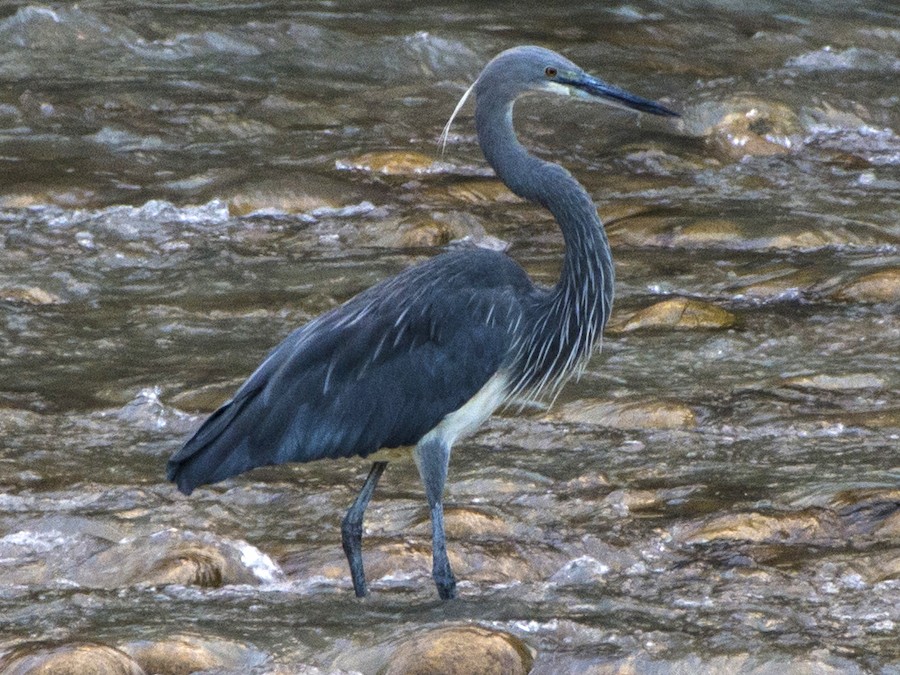Geography GK Quiz Questions and Answers

Which of the following is the closest layer to the Earth's surface in which all weather occurs?
(A) Mesosphere
(B) Troposphere
(C) Ionosphere
(D) Stratosphere
Correct Answer : B
Explanation :
1. The troposphere is the layer closest to the Earth's surface in which all seasonal changes occur.
2. This circulation is responsible for weather phenomena, such as clouds, rain, snowfall, and storms.
The ______ plateau is subdivided into the Garo Hills, the Khasi Hills, and the Jaintia Hills, named after the tribal groups inhabiting the region.
(A) Chota Nagpur
(B) Baghelkhand
(C) Malwa
(D) Meghalaya
Correct Answer : D
Explanation :
1. The Meghalaya Plateau is sub-divided into the Garo Hills, Khasi Hills and Jaintia Hills, named after the tribal groups living in the region.
The population of India is _____ according to Census 2011.
(A) 1.4 billion
(B) 1.21 billion
(C) 1.5 billion
(D) 1.11 billion
Correct Answer : B
Explanation :
1. According to the 2011 census, India's population was 1,210,193,422 (1.21 billion).
Match the columns.
Slash and burn agriculture Associated State
(A) Dahiya (I) Jharkhand
(B) Kuruwa (II) Odisha
(C) Bringa (III) Andhra Pradesh
(D) Penda (IV) Madhya Pradesh
(A) A-IV, B-II, C-I, D-III
(B) A-IV, B-III, C-I, D-II
(C) A-IV, B-I, C-II, D-III
(D) A-III, B-I, C-II, D-IV
Correct Answer : C
Explanation :
All columns match correctly.
(A) Dahiya - Madhya Pradesh
(B) Kuruwa - Jharkhand
(C) Barigaon – Odisha
(D) Penda - Andhra Pradesh
Consider the following statements about the main reasons for the excessive cold in north India during the cold weather season and identify which of the statements are correct.
1. States like Punjab, Haryana and Rajasthan, being far away from the moderating influence of sea, experience continental climate.
2.The snowfall in the nearby Himalayan ranges creates a cold wave situation.
3.Around February, the cold winds coming from the Caspian Sea and Turkmenistan bring a cold wave along with frost and fog over the northwestern parts of India.
(A) 1 and 2 only
(B) 2 and 3 only
(C) 1, 2 and 3
(D) 1 and 3 only
Correct Answer : C
Explanation :
After considering the following statements regarding the main causes of extreme cold in North India during the cold season, the correct statements have been identified.
1. States like Punjab, Haryana and Rajasthan, being far away from the moderating influence of sea, experience continental climate.
2. The snowfall in the nearby Himalayan ranges creates a cold wave situation.
3. Around February, the cold winds coming from the Caspian Sea and Turkmenistan bring a cold wave along with frost and fog over the northwestern parts of India.
The following statements are made regarding global warming.
A. Global warming is the long-term heating of Earth's surface observed since the pre-industrial period due to human activities, primarily fossil fuel burning, which increases heat-trapping greenhouse gas levels in Earth's atmosphere.
B. Global warming causes climate change, which poses a serious threat to life on Earth in the forms of widespread flooding and extreme weather. Which of these statements are correct?
(A) Only B
(B) Only A
(C) Both A & B
(D) Both A & B are incorrect
Correct Answer : C
Explanation :
The following statements are correct regarding global warming.
A. Global warming is the long-term heating of Earth's surface observed since the pre-industrial period due to human activities, primarily fossil fuel burning, which increases heat-trapping greenhouse gas levels in Earth's atmosphere.
B. Global warming causes climate change, which poses a serious threat to life on Earth in the forms of widespread flooding and extreme weather. Which of these statements are correct?
In which of the following states of India is the buffalo breed named 'Banni' mainly reared?
(A) Kerala
(B) West Bengal
(C) Gujarat
(D) Odisha
Correct Answer : C
Explanation :
1. Of the following in India, the 'Bunni' breed of buffalo is mainly found in Gujarat.
2. Banni buffalo, also known as "Kutchhi" or "Kundi", is a breed of buffalo found primarily in the Kutch district of Gujarat, India.
3. This breed is known for its high milk production capacity, disease resistance and adaptability to dry environments.
In which of the following regions of India is the natural habitat of White-bellied Heron largely distributed?
(A) North-east
(B) Northern plains
(C) Deccan plateau
(D) Western coast
Correct Answer : A
Explanation :
 1. White-bellied Heron naturally inhabits the north-eastern region of India.
1. White-bellied Heron naturally inhabits the north-eastern region of India.
2. The bellied Heron is a bird which is mostly found in the low-altitude marshy areas of the Himalayas.
3. It is also called imperial heron in India.
4. In the year 2007, it was listed as 'Critically Endangered' in the Red List of the International Union for Conservation of Nature (IUCN).
Match the columns.
Institutions Headquarters
(A) ICAR-Central Institute for Arid Horticulture (I) Bikaner
(B) ICAR-Central Institute of Cotton Research (II) Nagpur
(C) ICAR-National Rice Research Institute (III) Cuttack
(D) ICAR-Indian Institute of Horticultural Research (IV) Bengaluru
(A) A-I, B-II, C-III, D-IV
(B) A-I, B-II, C-IV, D-III
(C) A-IV, B-III, C-I, D-II
(D) A-IV, B-III, C-II, D-I
Correct Answer : A
Explanation :
All columns match correctly.
(A) ICAR-Central Institute for Arid Horticulture - Bikaner
(B) ICAR-Central Institute of Cotton Research - Nagpur
(C) ICAR-National Rice Research Institute - Cuttack
(D) ICAR-Indian Institute of Horticultural Research - Bengaluru
Name the hot, dry oppressing winds that blow in between Delhi and Patna.
(A) Nor westers
(B) Mango shower
(C) Blossom shower
(D) Loo
Correct Answer : D
Explanation :
1. The hot, dry, painful winds blowing between Delhi and Patna are called Loo.
2. Flows in the plains of northern India and Pakistan in the months of May and June.
3. Heat waves can reach temperatures of up to 45 degrees Celsius, and can last for several hours.



